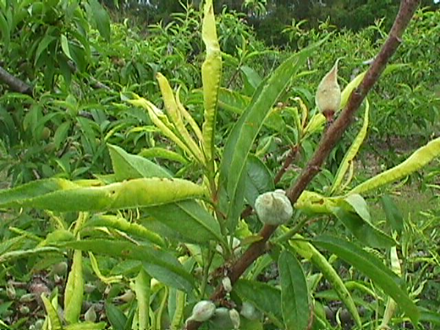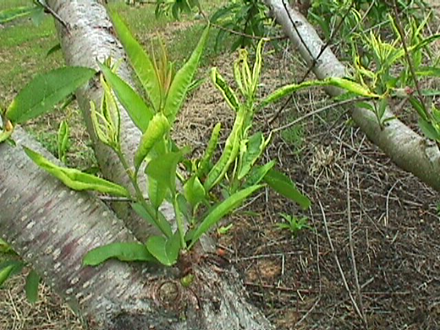2,4-D Injury on Peach
Return to Abiotic Disorders
2,4-D (2,4 dichlorophenoxyacetic acid) injury is evident shortly after exposure. New growth and some older leaves become twisted, malformed, and curled. Symptomatic foliage may also appear chlorotic (yellow). Damage may reappear the following season depending on the dosage received. In severe cases, trees may be killed. Injury results when trees are exposed to the herbicide by sprayer contamination or spray drift. Volatilization and movement from target areas can occur when applications are made under dry, low humidity conditions and at temperatures above 85°F. Ester formulations tend to volatilize more readily than amine formulations.

2,4-D herbicide damage to shoot.
(Photo: Southern Region Small Fruit Consortium, Wayne Mitchem, North Carolina State University)

2,4-D herbicide damage to scaffold limb.
(Photo: Southern Region Small Fruit Consortium, Wayne Mitchem, North Carolina State University)
Management:
- Use formulations labeled for peaches.
- Avoid applications beneath peach trees or on surrounding crops when temperatures are above 85°F.
- Use a coarse spray at a low pressure to avoid volatilization and drift.
